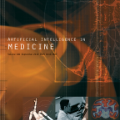This paper challenges the cross-domain semantic segmentation task, aiming to improve the segmentation accuracy on the unlabeled target domain without incurring additional annotation. Using the pseudo-label-based unsupervised domain adaptation (UDA) pipeline, we propose a novel and effective Multiple Fusion Adaptation (MFA) method. MFA basically considers three parallel information fusion strategies, i.e., the cross-model fusion, temporal fusion and a novel online-offline pseudo label fusion. Specifically, the online-offline pseudo label fusion encourages the adaptive training to pay additional attention to difficult regions that are easily ignored by offline pseudo labels, therefore retaining more informative details. While the other two fusion strategies may look standard, MFA pays significant efforts to raise the efficiency and effectiveness for integration, and succeeds in injecting all the three strategies into a unified framework. Experiments on two widely used benchmarks, i.e., GTA5-to-Cityscapes and SYNTHIA-to-Cityscapes, show that our method significantly improves the semantic segmentation adaptation, and sets up new state of the art (58.2% and 62.5% mIoU, respectively). The code will be available at https://github.com/KaiiZhang/MFA.
翻译:本文挑战了跨部的语义分解任务, 目的是提高未加标签的目标域域的分解精度, 而不会引起额外的注释。 我们用假标签的未经监督的域适应(UDA)管道, 提出了一个新颖而有效的多重融合适应(MFA)方法。 MFA基本上考虑三种平行的信息融合战略, 即跨模范聚合、 时间聚合和新颖的在线离线假标签聚合。 具体地说, 在线离线假标签聚合鼓励适应性培训对容易被离线假标签忽略的困难区域给予更多的关注, 从而保留更多的信息细节。 虽然另外两种聚合战略可能看似标准, MFA 花了很多精力提高整合的效率和效力,并成功地将所有这三种战略注入一个统一的框架。 在两种广泛使用的基准上进行实验, 即GTA5- 至 Cityscovers和 SYNTHIA- to Cityscovers, 显示我们的方法极大地改进了语义分解/ MA5 和MFI 新的艺术代码。



